Three
DARTMOUTH SETS THE TONE
The proposal for founding the Dartmouth Outing Club finished with the following: By taking the initiative in this manner, Dartmouth might well become the originator of a branch of college organized sport hitherto undeveloped by American colleges.
—Fred Harris to the Dartmouth, December 7, 1909.
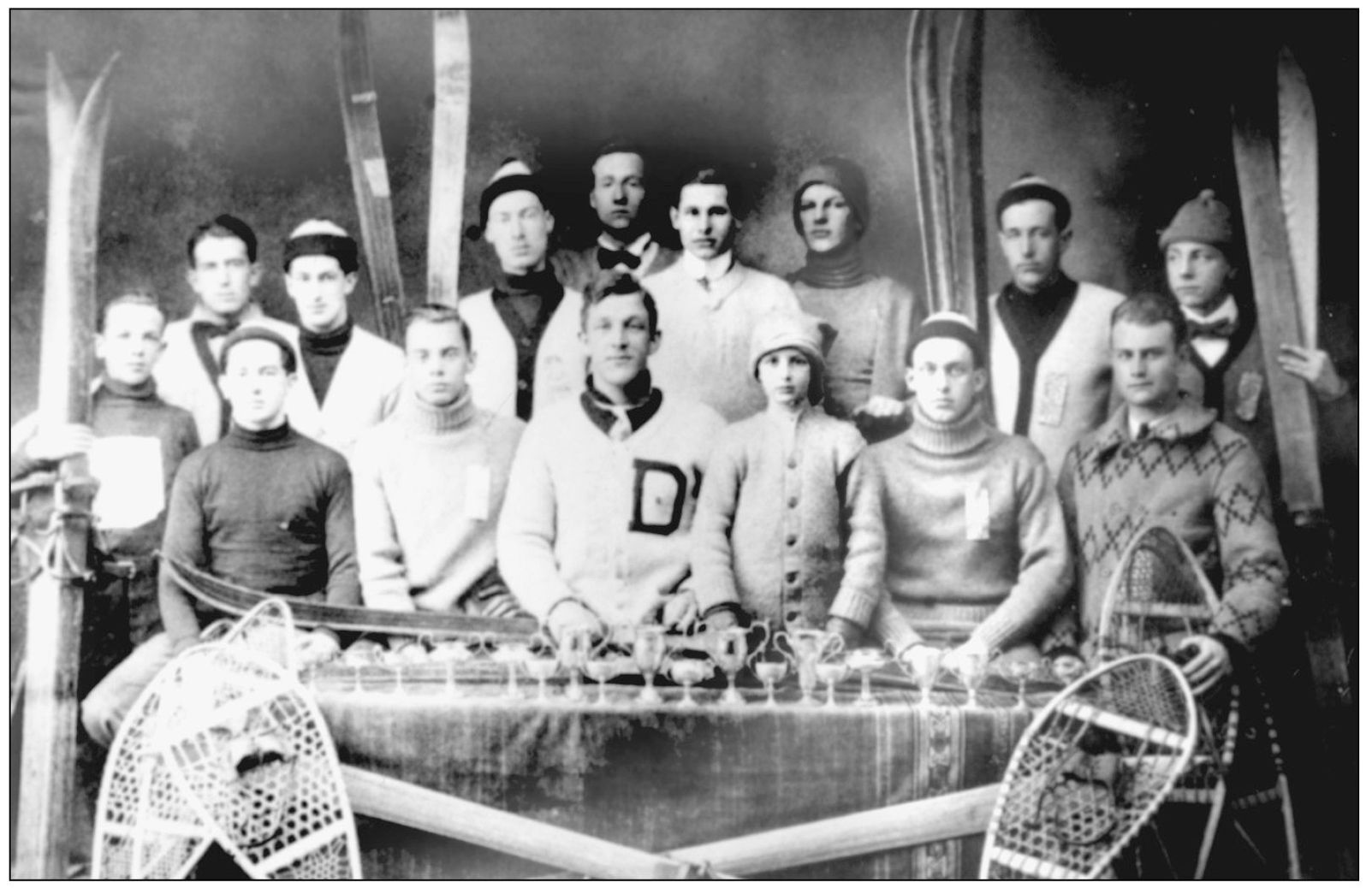
The founding of the Dartmouth Outing Club in 1909 by Fred Harris (center) brought skiing into the purview of the wealthier sectors of eastern society.
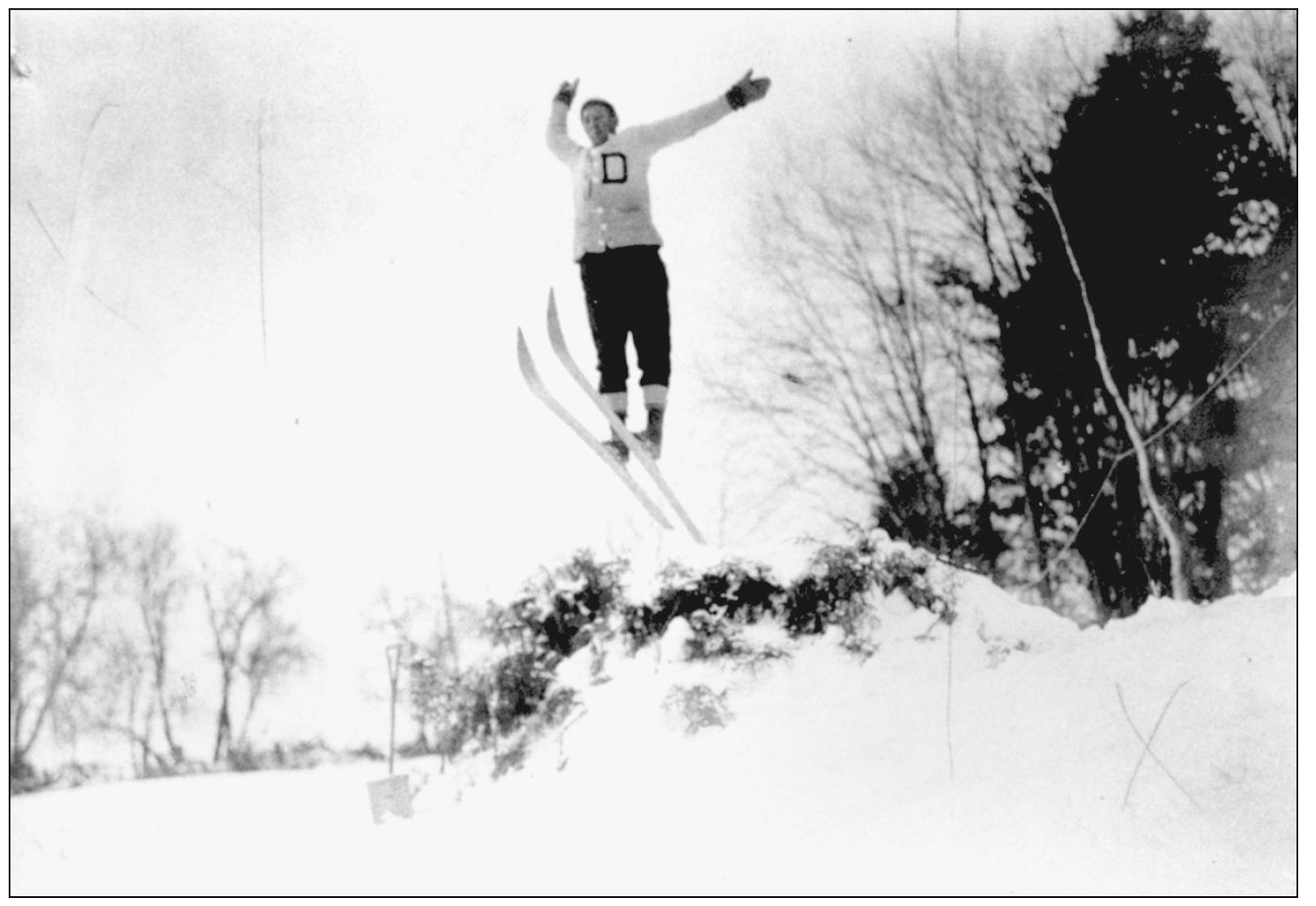
These two images depict jumping at Dartmouth about 15 years apart. In the top photograph, Fred Harris is traveling 40 feet over a homemade jump c. 1910, and in the mid-1920s, a crowd has turned out to watch the stars perform on the day of the Winter Carnival. From a carefully constructed jump with a packed runout, someone like Charley Proctor could fly more than 100 feet.
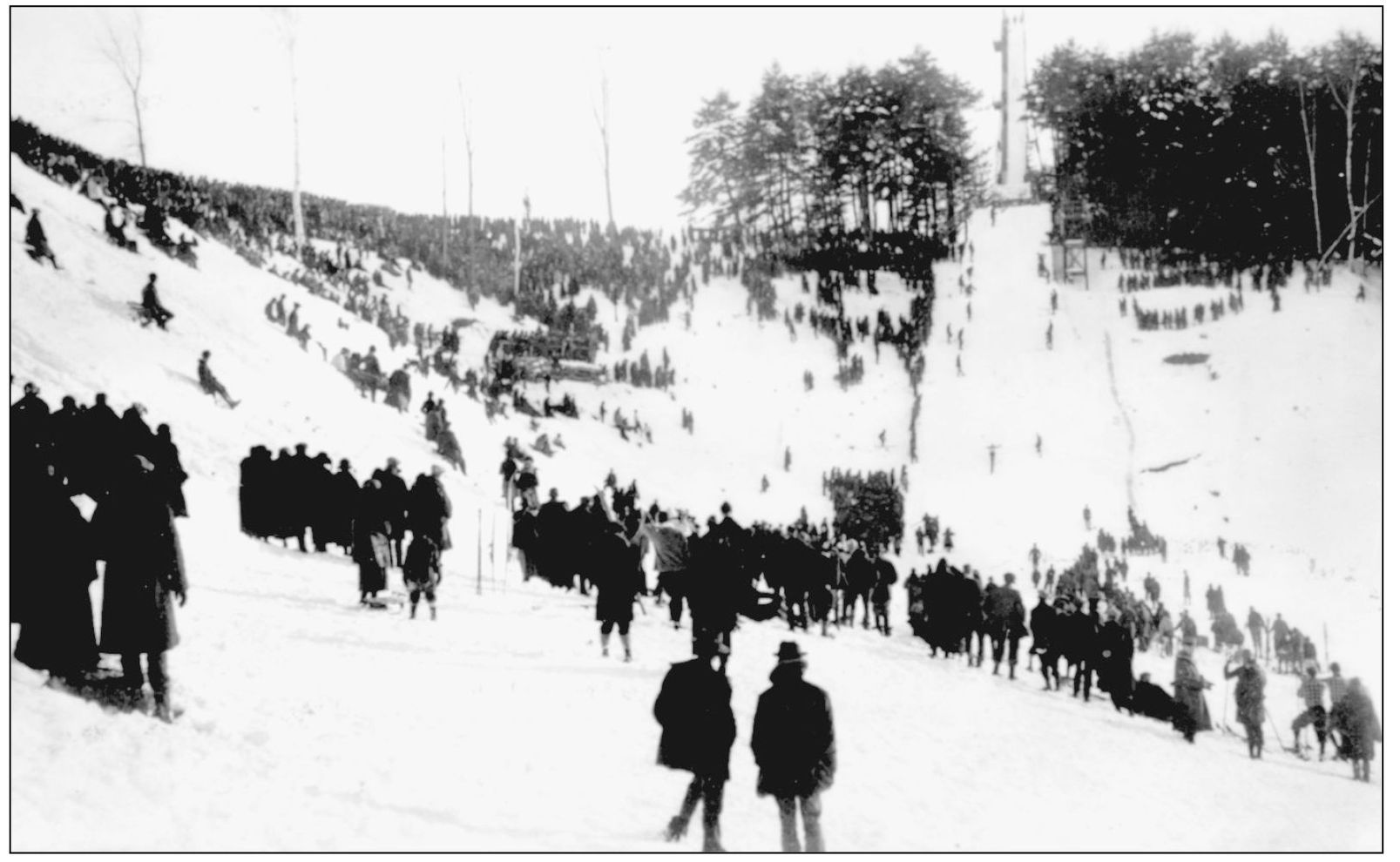
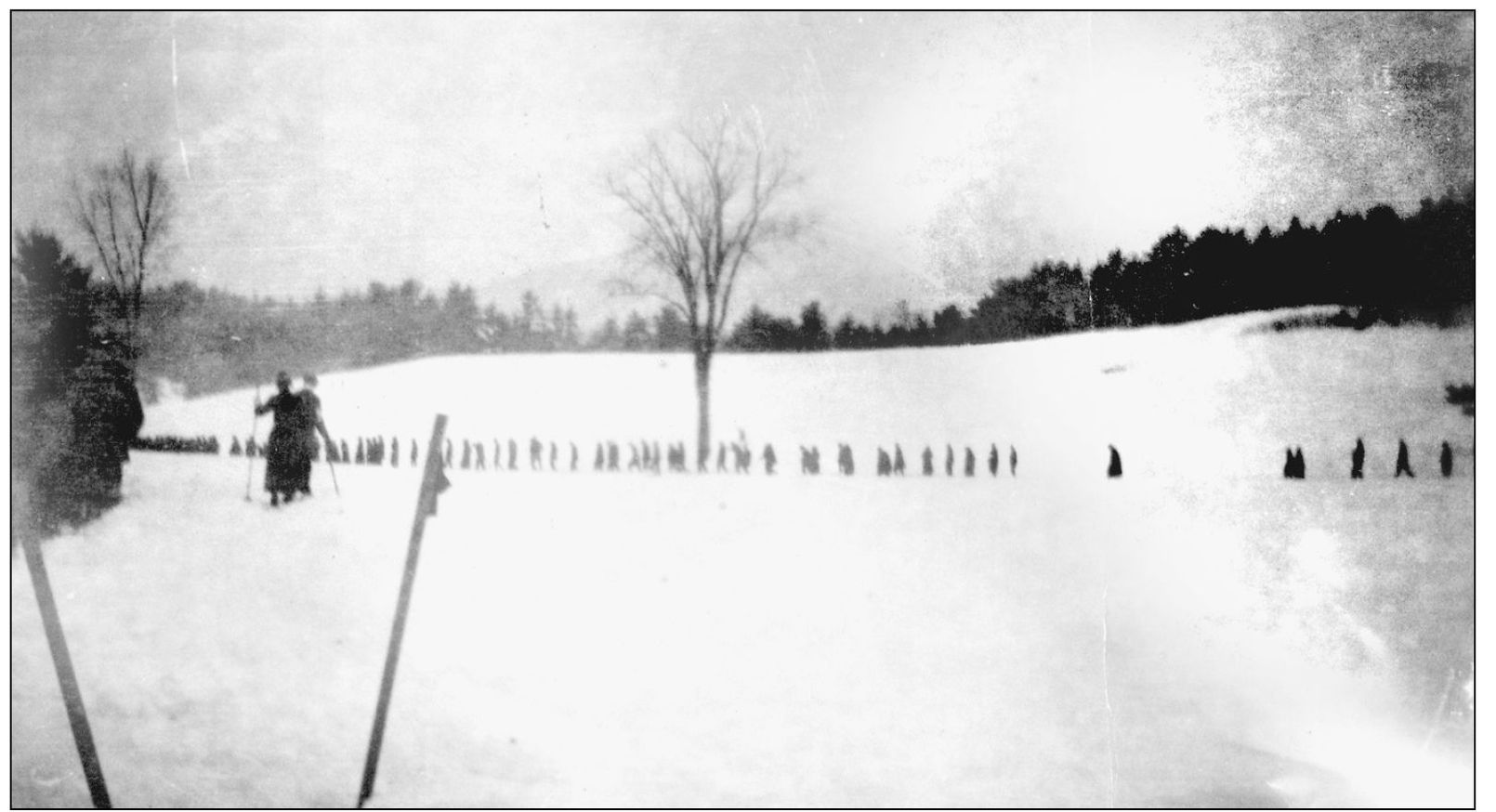
Downhill skiing was made far less exhausting with the invention of the rope tow in the early 1930s. The line for the tow on the Hanover golf course shows how popular it was. Today, of course, this area would be good only for cross-country, not downhill.
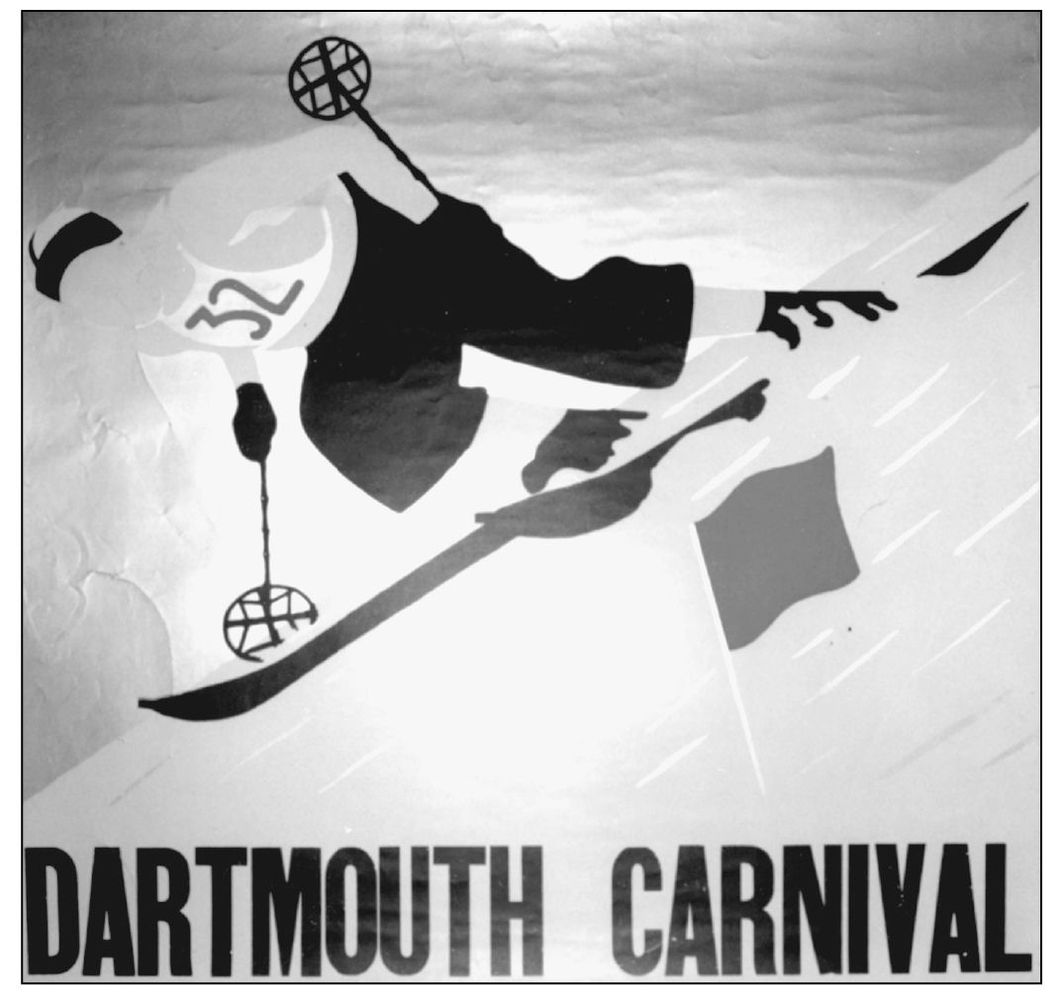
This undated carnival poster, possibly from 1932, shows how much the Alpine ethos had permeated skiing. Here, an expert racer in full racing gear and with superb technique (known as Vorlage) is flashing through a flagged course. No one at Dartmouth in 1932 would have looked quite like this.
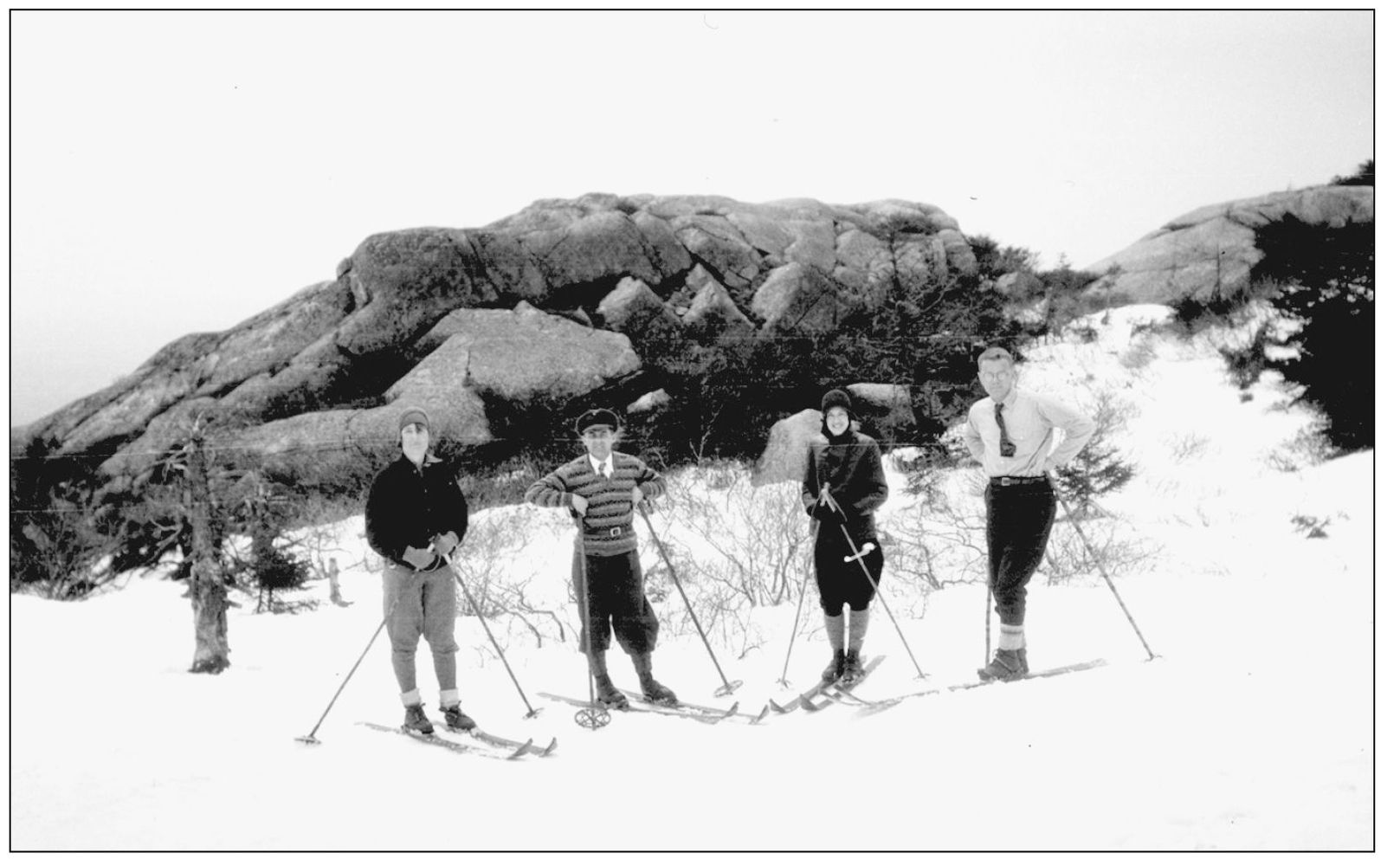
Looking as jaunty as ever, Otto Schniebs is taking a small group of “Appies” up (and down) Mount Monadnock in 1929. The AMC and Harvard University hired Schniebs as instructor while he was working at a watch factory.
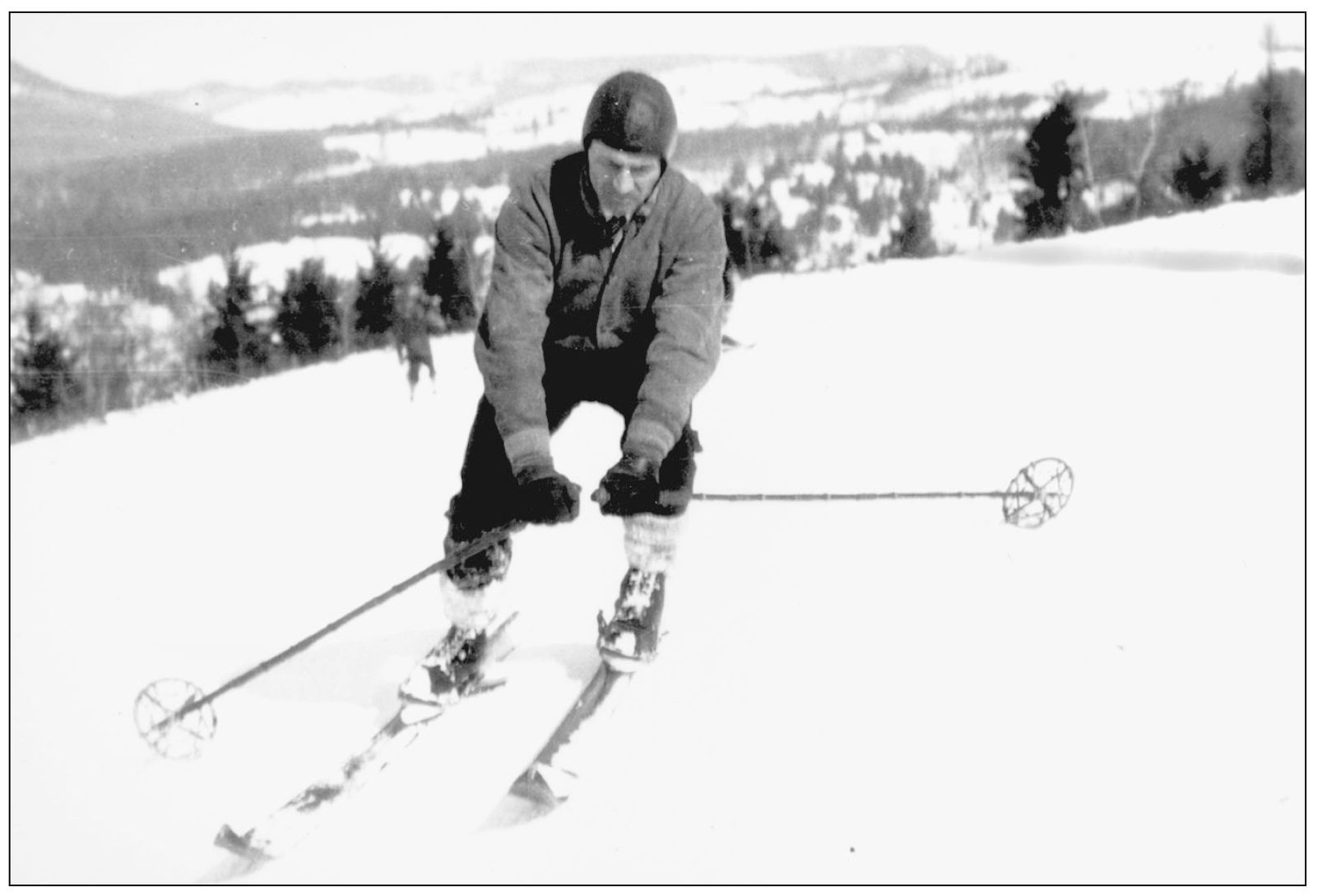
Otto Schniebs demonstrates the Alpine technique in 1929. He taught a regular weekly session to the AMC in the Boston area before being found by Dartmouth, where he came to coach both the team and locals in the mysteries of the Arlberg technique. “Favors Crouch Technique,” reported the college paper, heralding Schniebs’s arrival in Hanover.
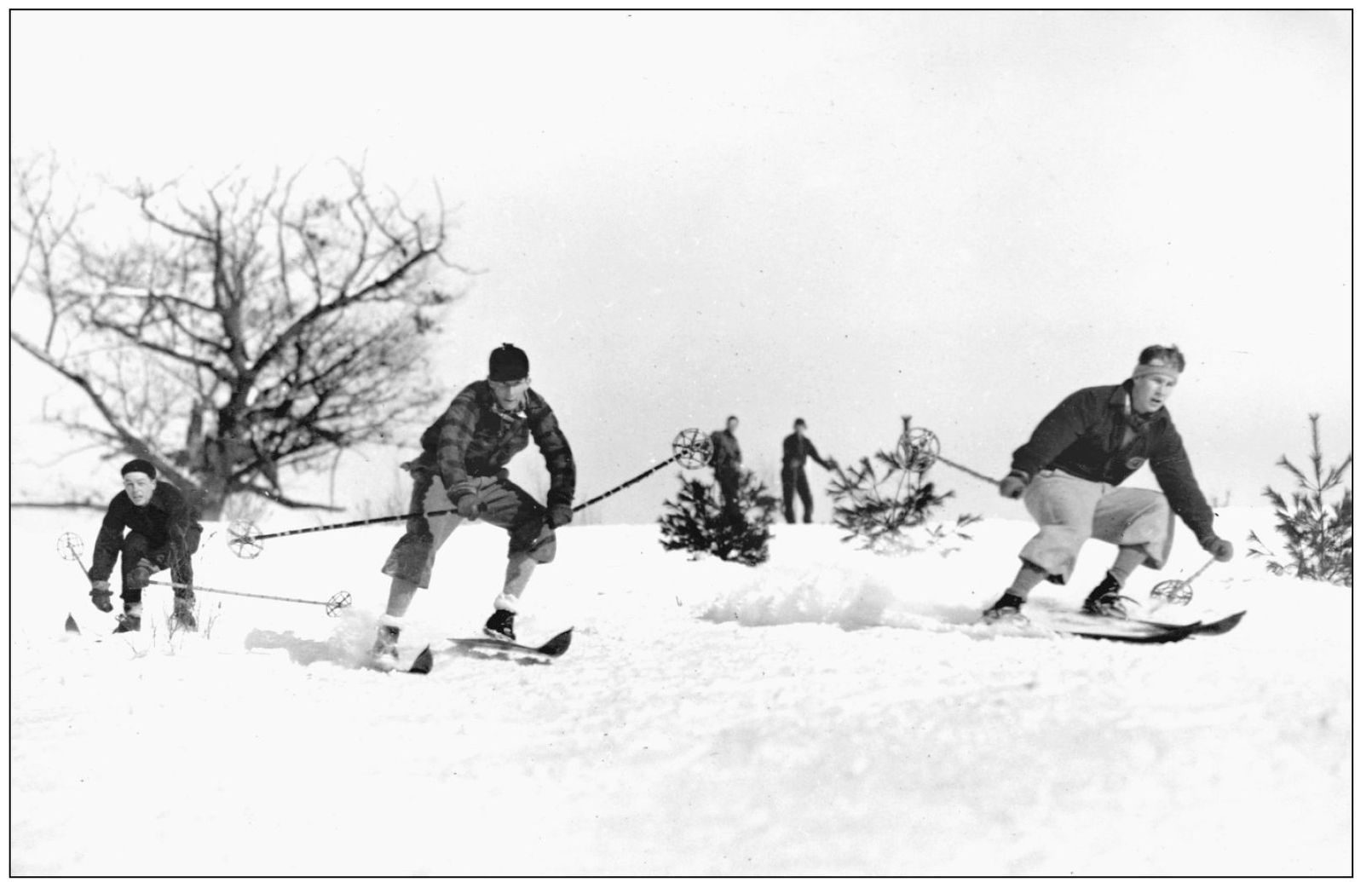
The Arlberg technique, so named for that region of the Austrian Alps where Hannes Schneider had perfected it, was essentially a low crouch with a lift and swing into the turn. Once their speed was up, skiers tended to stay in the crouched position.
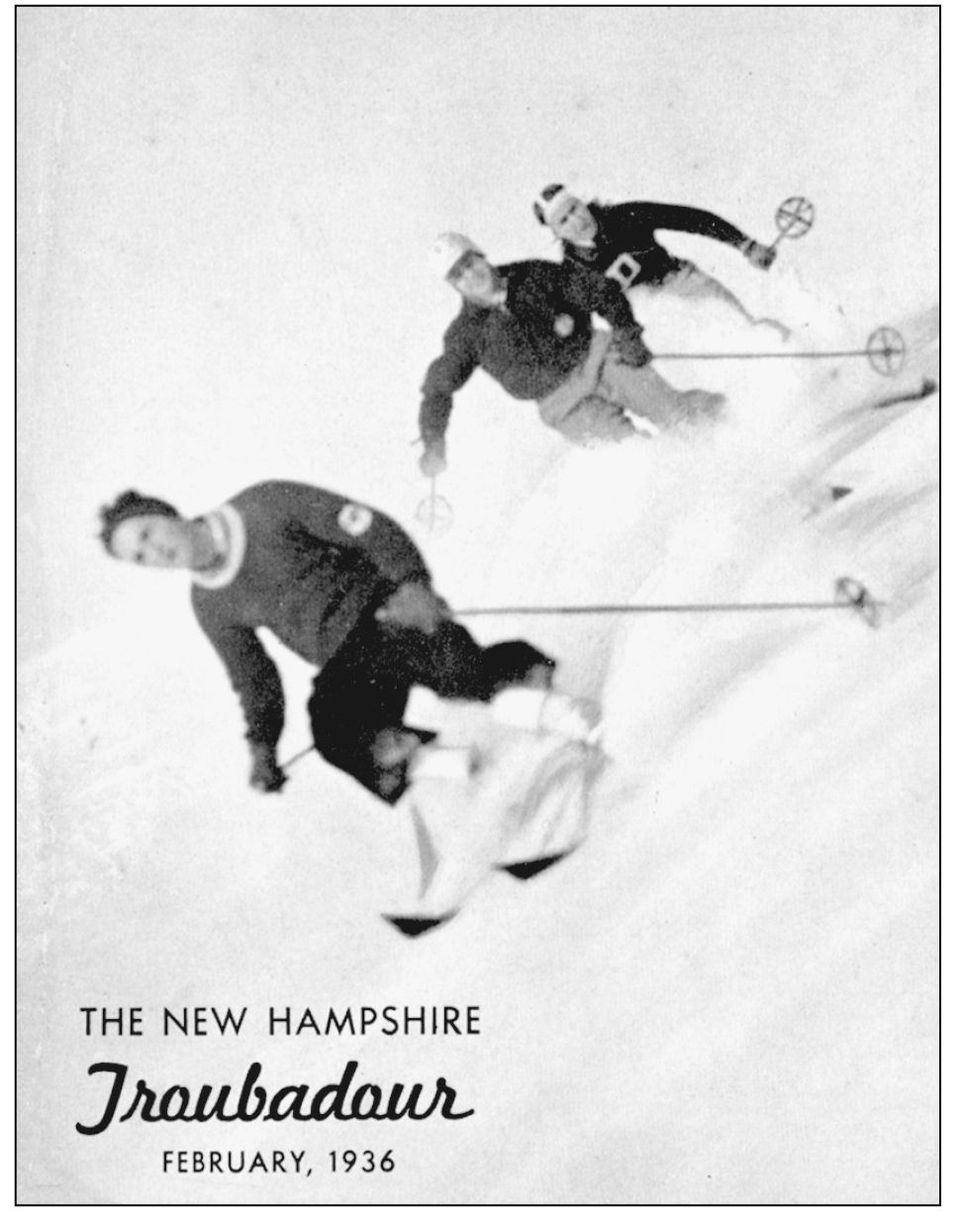
By the mid-1930s, the Dartmouth team had the technique down. Led by Dick Durrance (in the lead here, followed by Ted Hunter and Sel Hannah), who had learned his skiing in Germany, Dartmouth skiers speed down the cover of the state’s Troubadour.
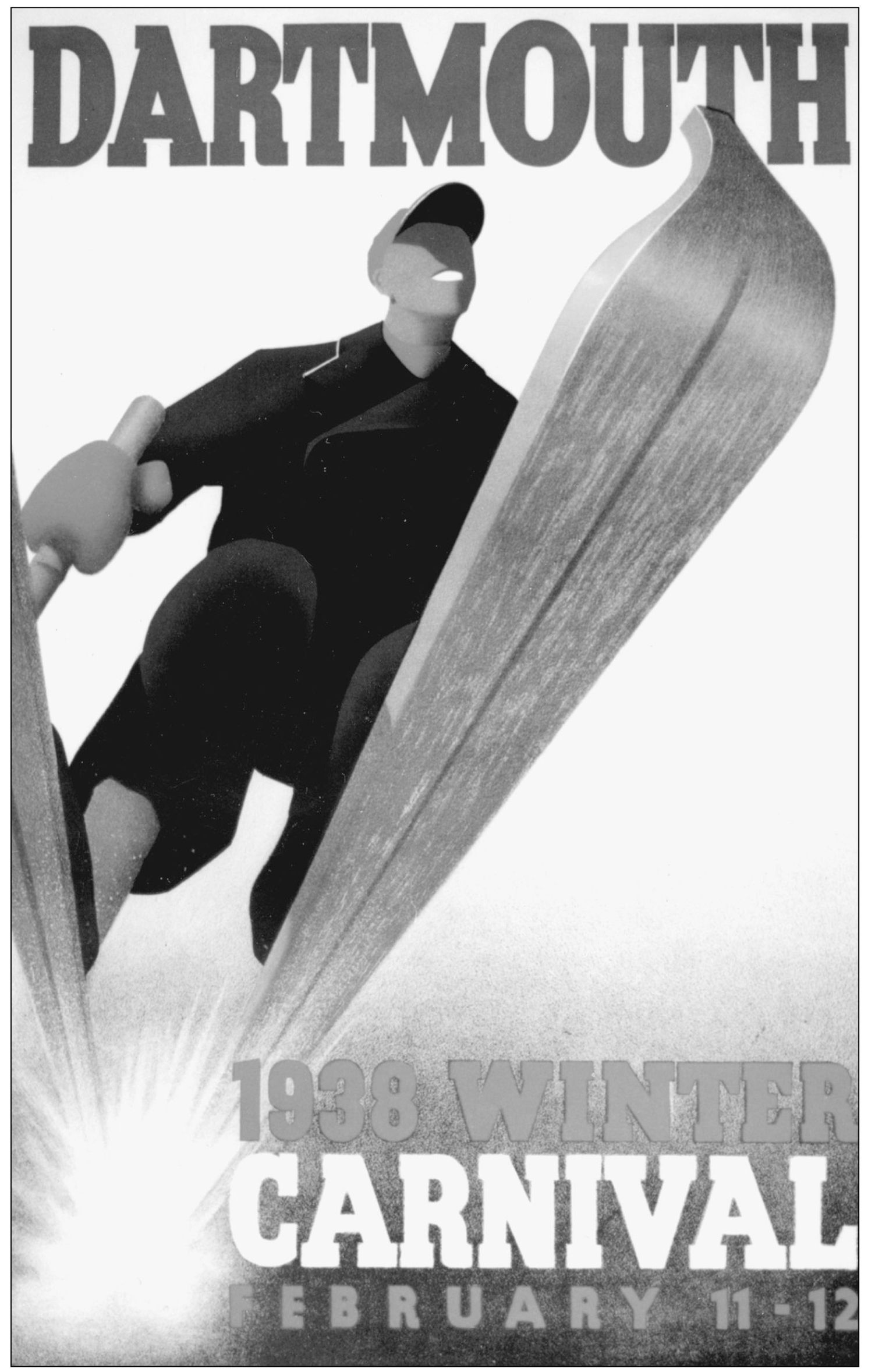
Strength, power, health, and Dartmouth are proclaimed here by poster artist Joanethis.
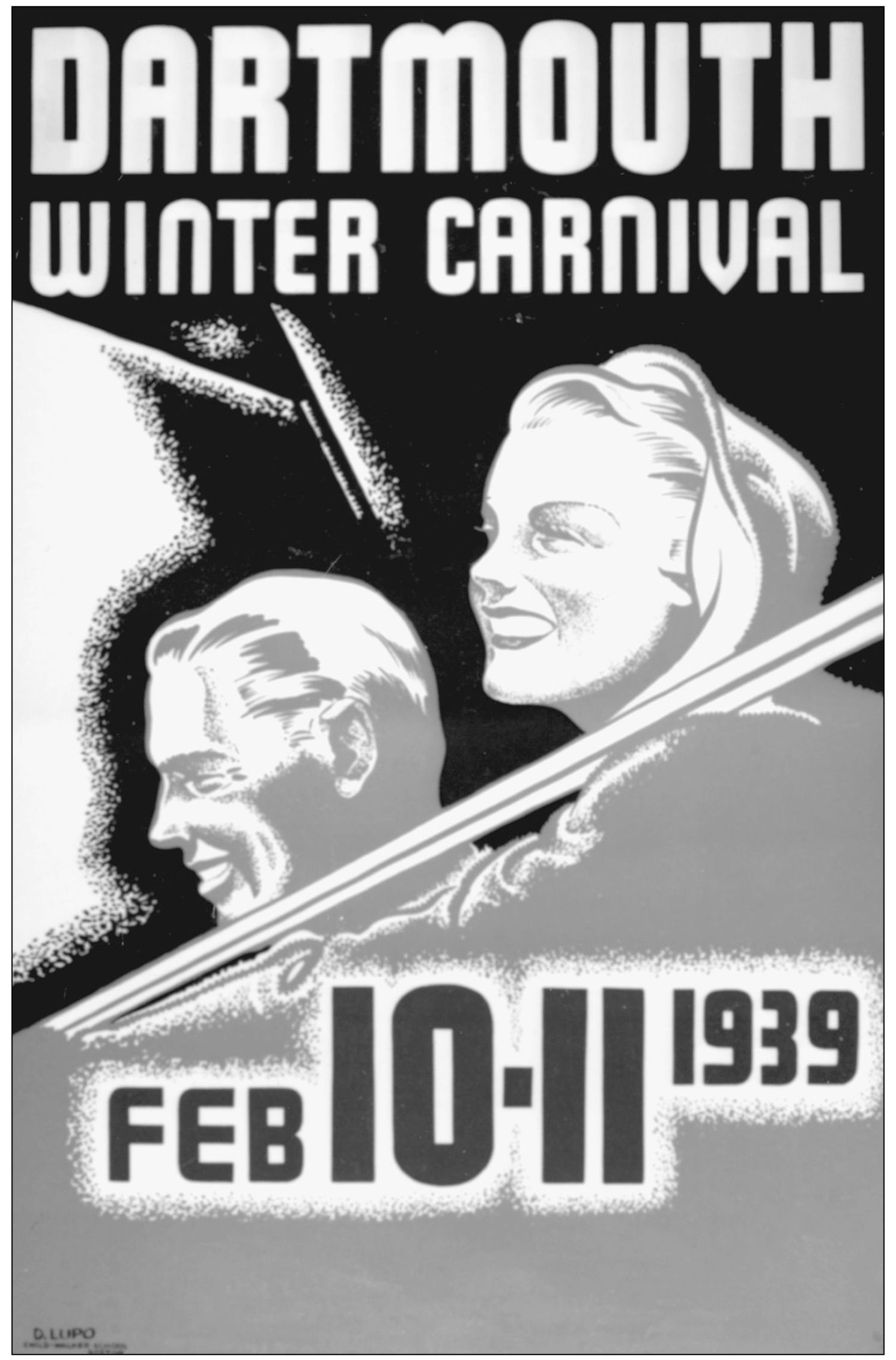
D. Lupo’s poster portrays health, happines, sociability, and good looks. In the 1930s, the Winter Carnival became a major social attraction, and many young women from Smith, Wellesley, and Mount Holyoke Colleges trained north for the winter weekend.
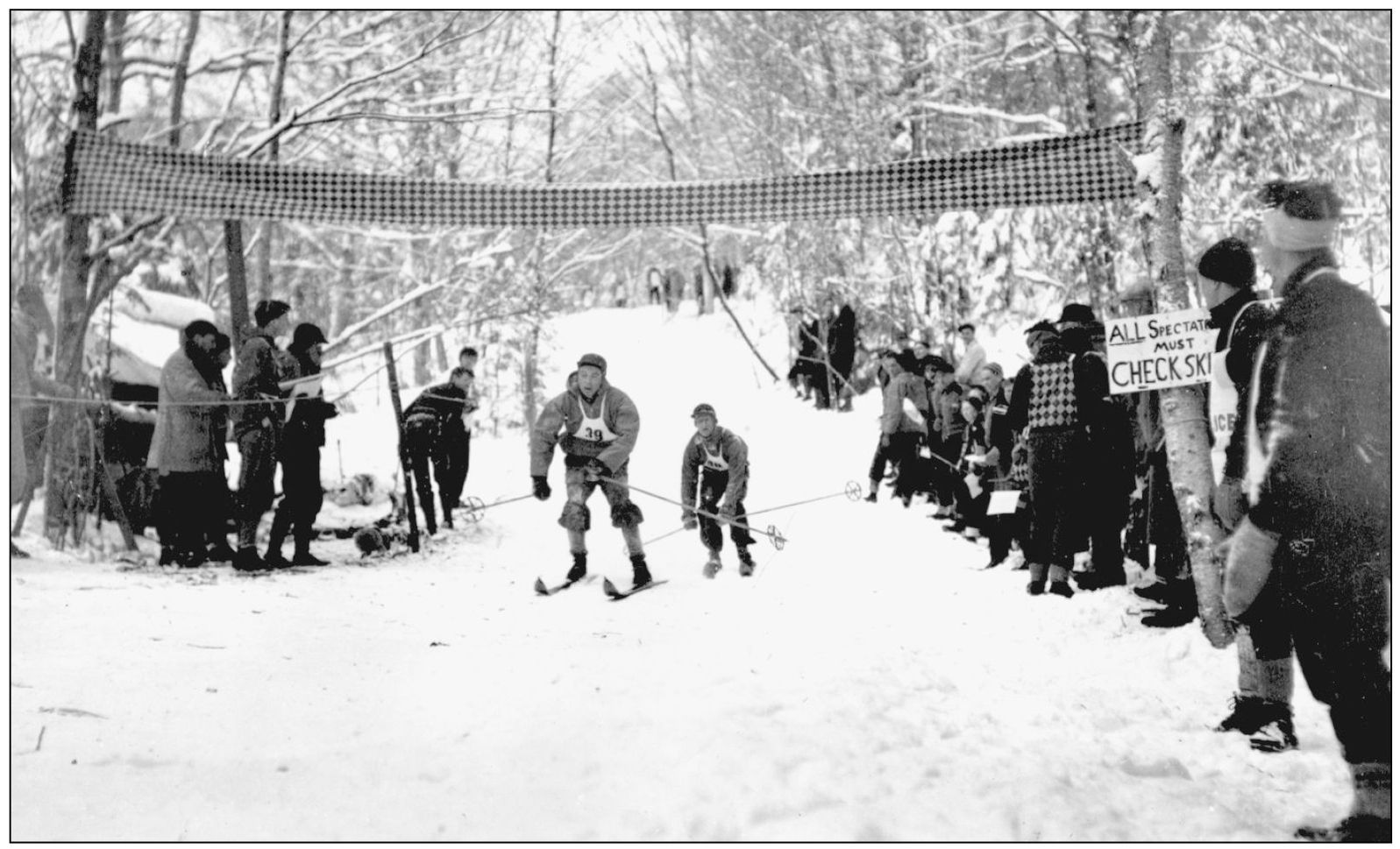
The finish of the first United States National Downhill Championship on March 12, 1933, is shown on Dartmouth’s own Mount Moosilauke. Sixty-nine runners finished, and the winner was Dartmouth’s Bem Woods, who ran the 2.8-mile Carriage Road in just over eight minutes.
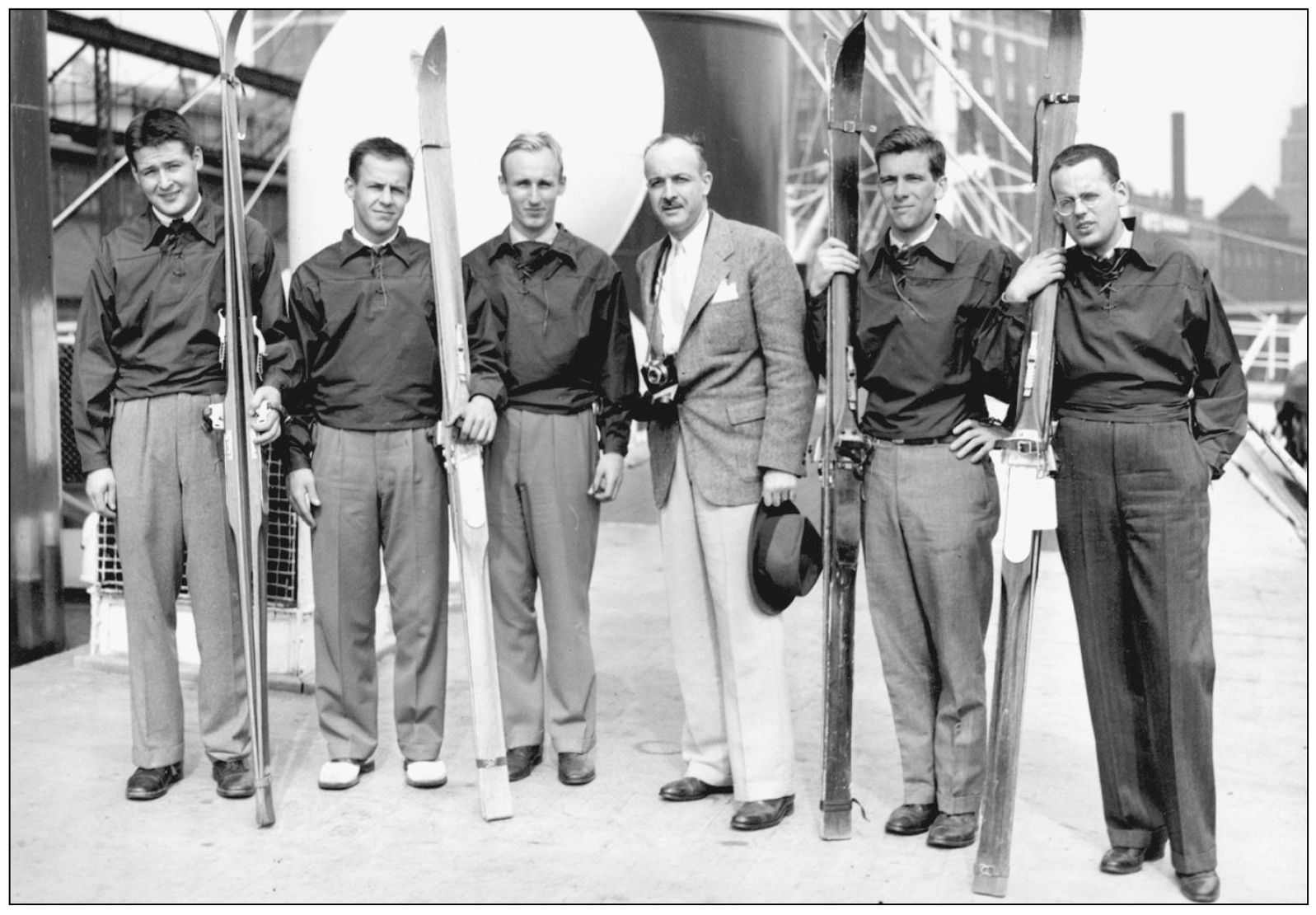
Dartmouth was heavily represented when teams from the United States traveled abroad to New Zealand and, in this photograph, to South America. Four of the five competitors were from Dartmouth. From left to right are Ed Wells, Don Fraser (the lone westerner), Steve Bradley, Eugene DuBois (organizer), Warren Chivers, and John Litchfield.
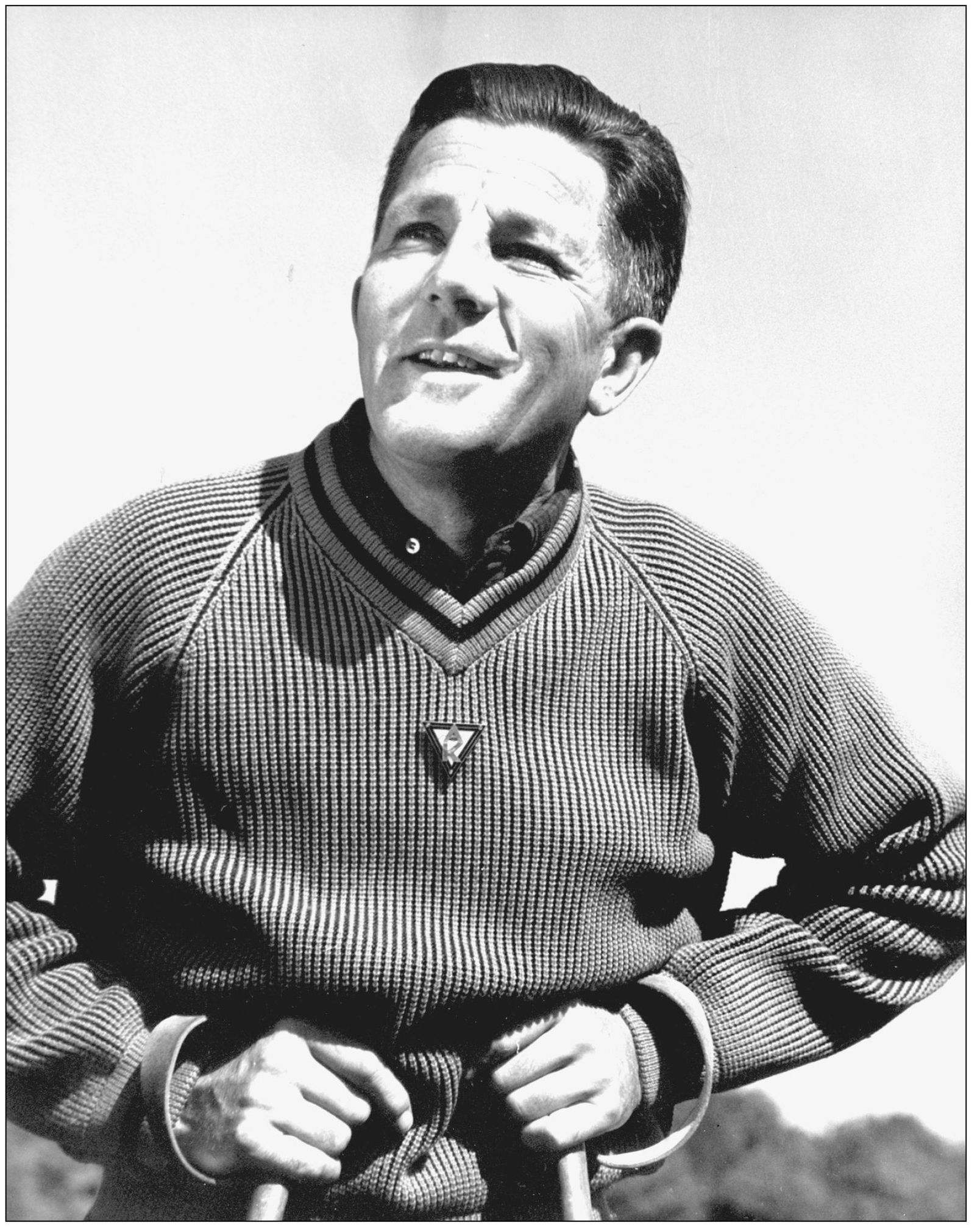
Swiss Walter Prager, winner of the Arlberg-Kandahar, the Parsenn, and other prestigious races in Europe, followed Otto Schniebs as coach for Dartmouth. He went on to join the 10th Mountain Division during the war and returned to Dartmouth to coach until 1957.
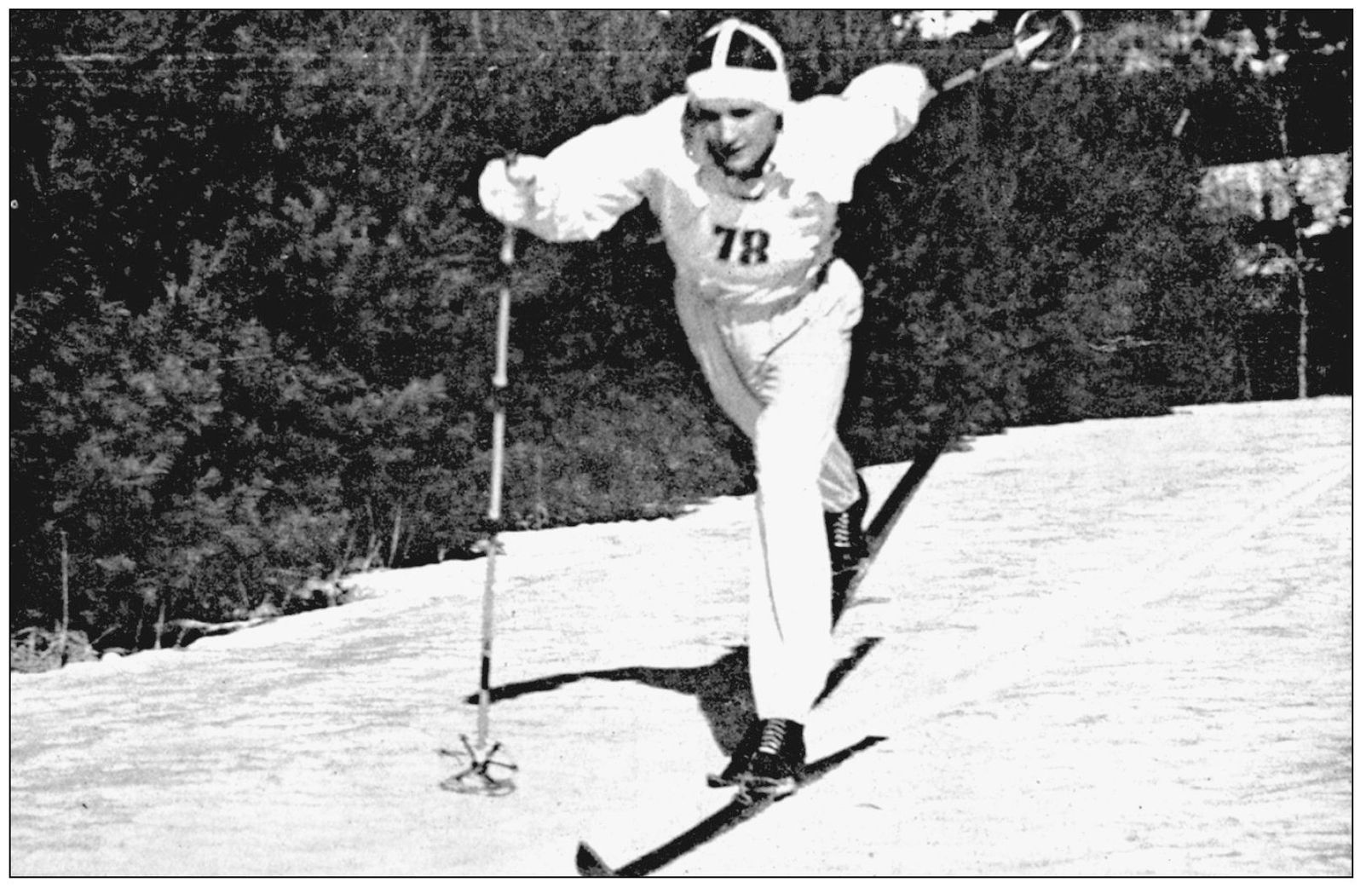
Howard Chivers (above) and John Litchfield (below) were two cross-country stalwarts of late-1930s Dartmouth teams. Chivers won the Canadian and American cross-country championships and was selected for the 1940 Olympic team. Litchfield captained the 1939 team and, like Chivers, was selected for the 1940 U.S. Olympic squad, which never got to race because of the war. After joining the 10th Mountain Division, he opened the Red Onion in Aspen while teaching at the Aspen Ski School. Later, as executive director, he ran the Sun Valley ski school. He was inducted into the National Ski Hall of Fame in 2002.
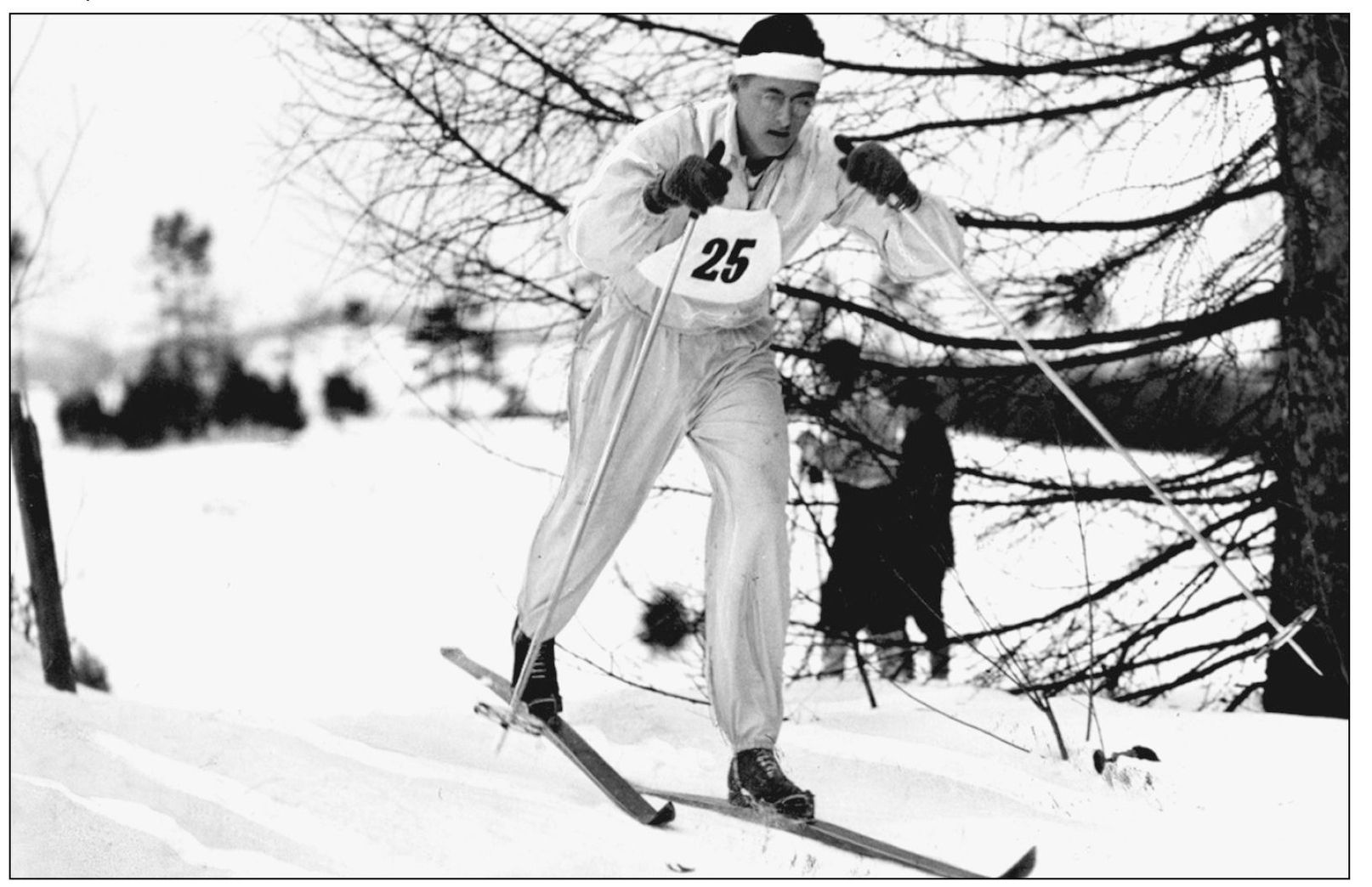
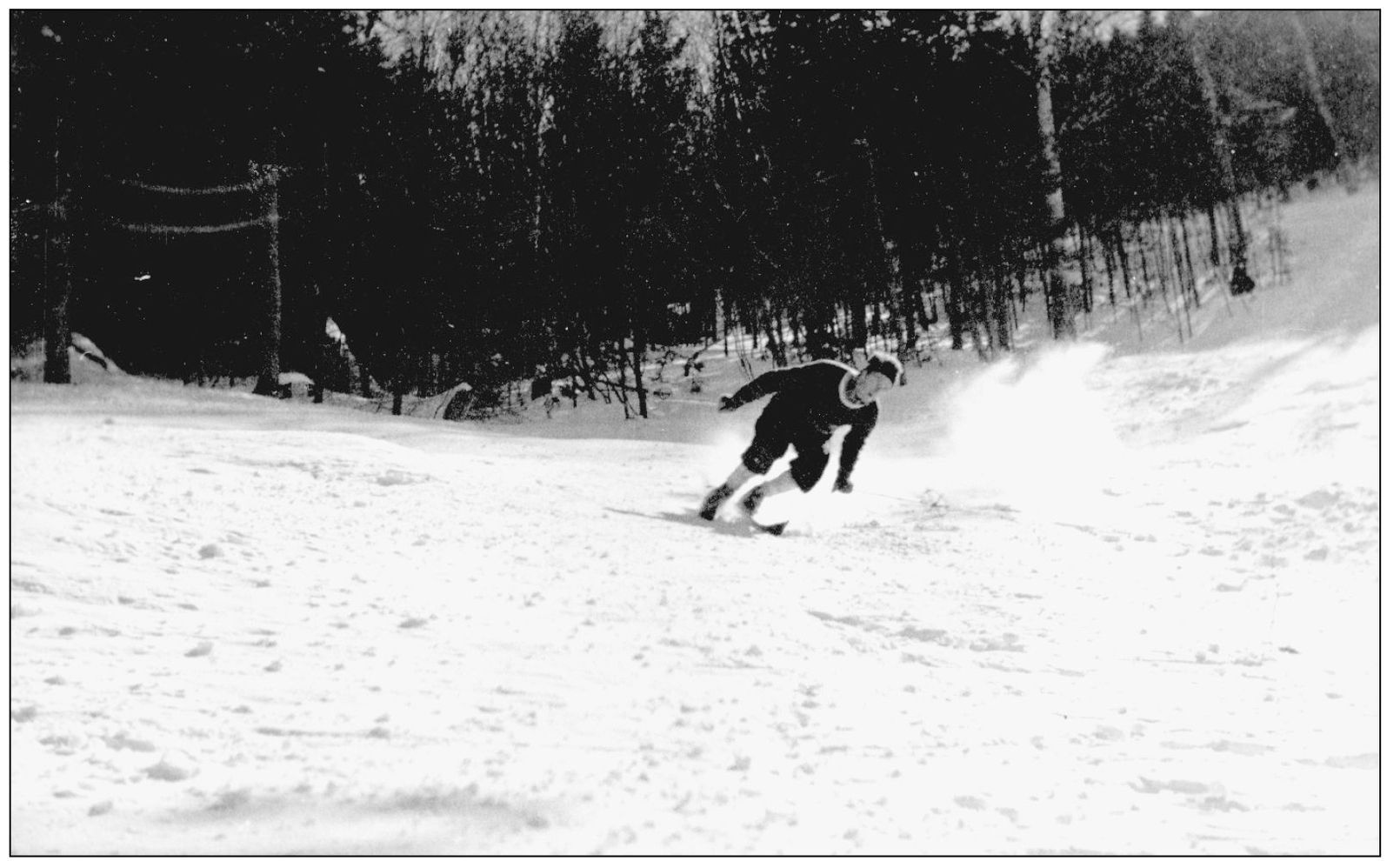
Dick Durrance carves a fast turn on the Wildcat. Durrance had been German junior champion before attending Newport High School and Dartmouth. He won many championships, including cross-country and jumping, but he was best known for his Alpine technique. He won 8th place in slalom and 11th in downhill at the 1936 Olympics. At home, he retired the Harriman award.
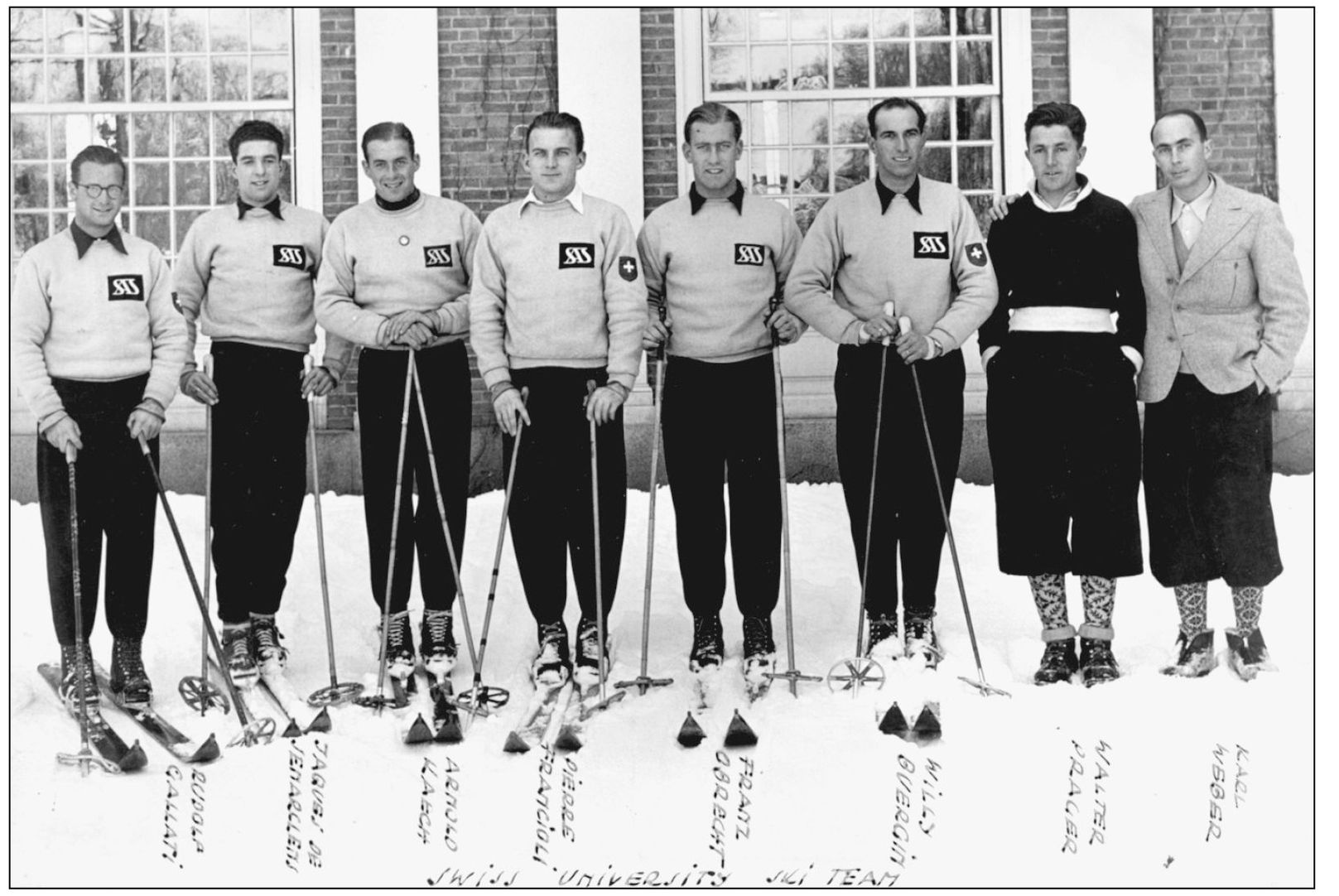
Dartmouth played host to visiting European teams. Here, the Swiss Universities’ team lines up in Hanover along with the two coaches, Dartmouth’s Walter Prager (also Swiss) and Karl Weber.
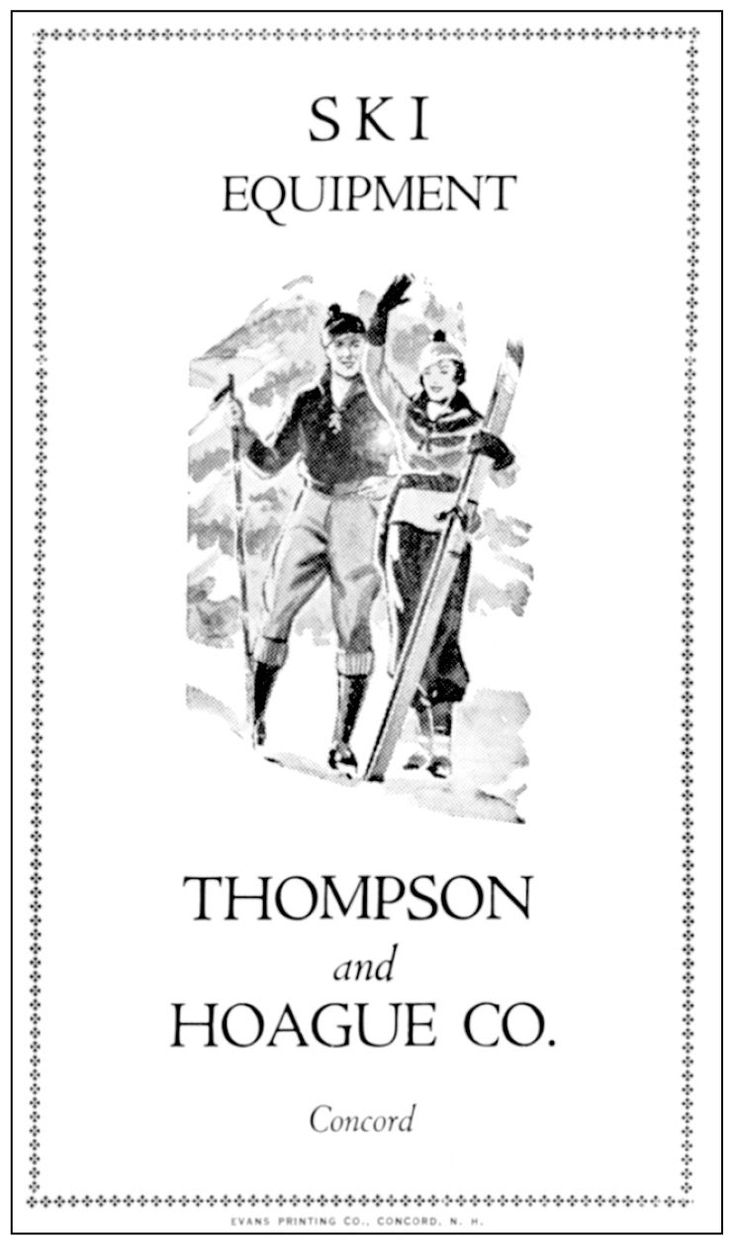
In the early days, people put on their winter outdoor clothes to go skiing. In the 1920s, riding gear such as jodhpurs was popular. It was only in the 1930s that shop owners realized there was a growing clientele who would buy specialized equipment and clothing. Thompson and Hoague of Concord provided special hats, sweaters, and plus four–type trousers for her and breeches for him.
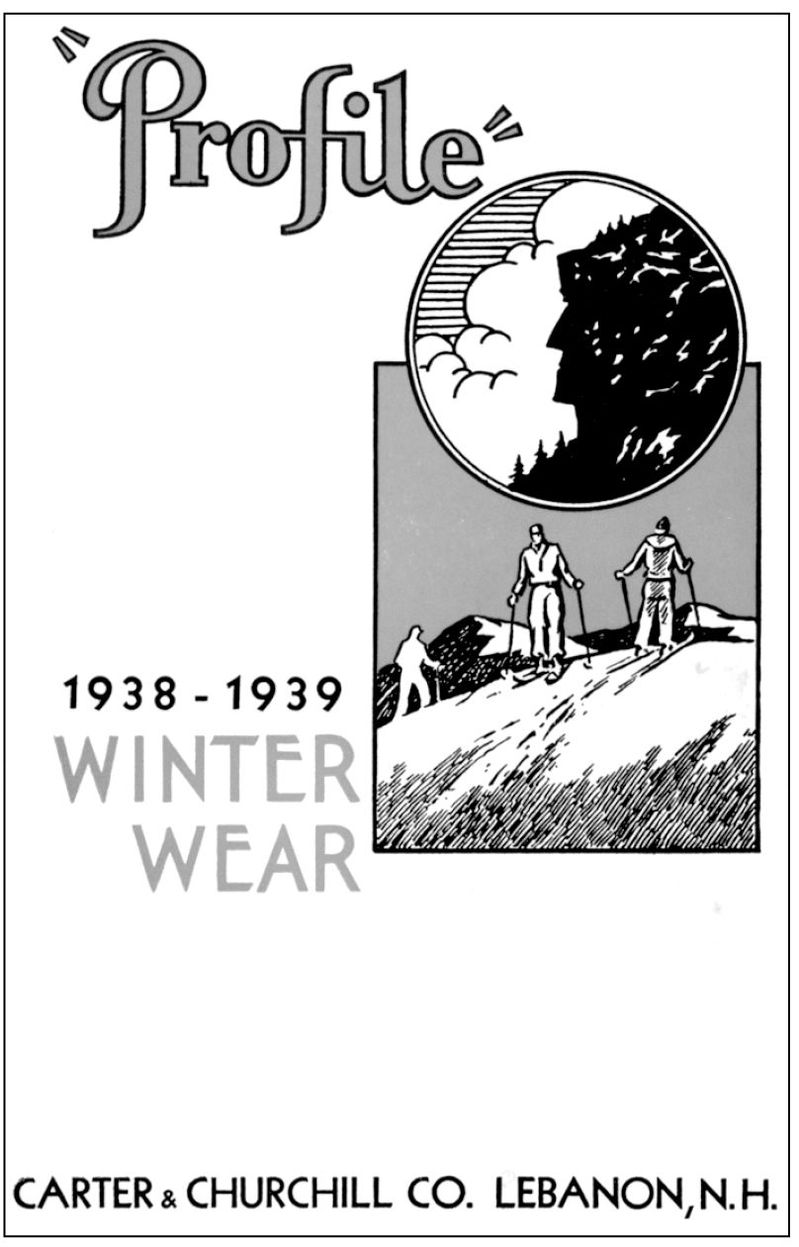
Carter and Churchill became one of the best-known ski clothing manufacturers in the United States.
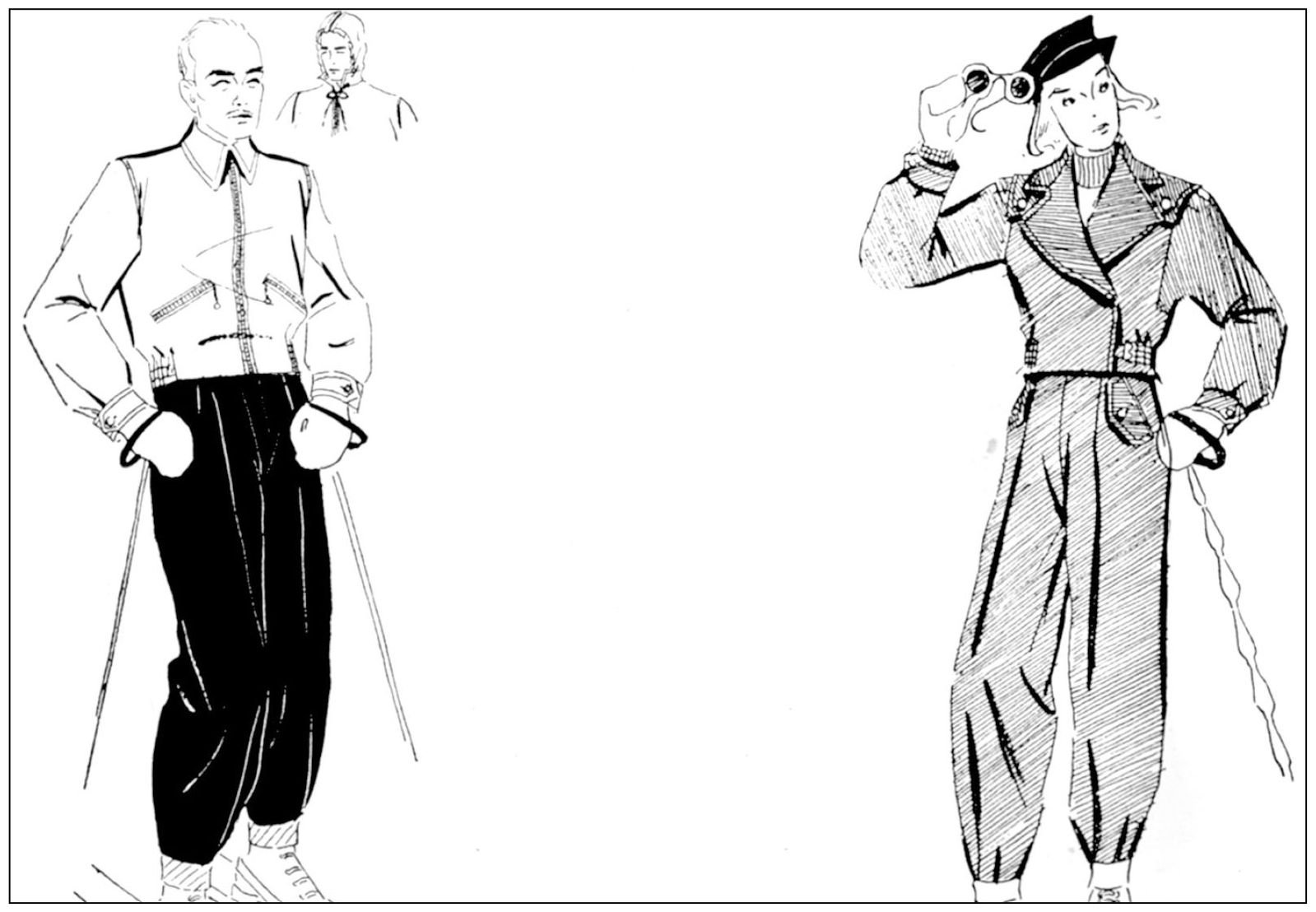
Profile’s ski fashions for the 1938–1939 season included a windproof and water-repellent jacket with zippers. The Vorlage pants (using a German skiing term meaning “forward lean”) were of gabardine. For her, an all-worsted gabardine ski suit was sold with either Vorlage or sateen-lined pants. Discreet color was the order of the day: navy, natural, or tan for him, and navy or gray for her.
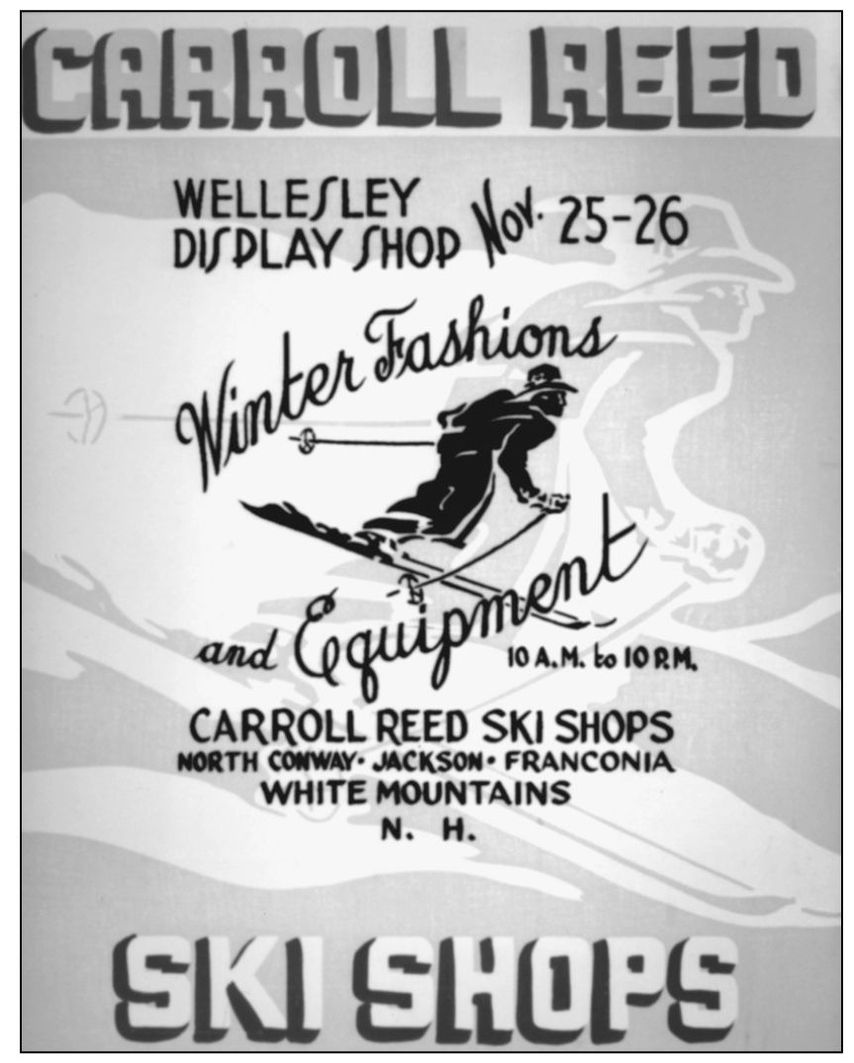
There were ski shops in Boston in the late 1920s, and ski equipment and clothing were sold at other stores too. Carroll Reed was the first entrepreneur to bring the ski shop right to ski country while using the image of Benno Rybizka as the perfectly attired Austrian skier that Americans should emulate.
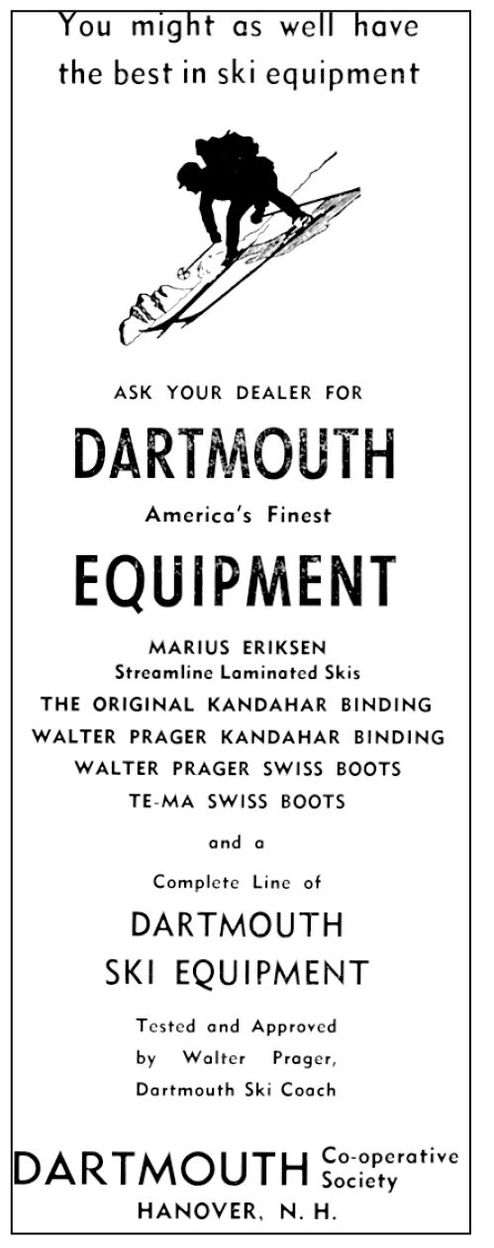
This advertisement shows a down-mountain skier using equipment tested by one of the well-known names of New Hampshire skiing, Walter Prager, skiing perhaps on Marius Eriksen skis. This shows the strong affiliation of excellence of ski equipment with the Norwegian heritage. Prager himself has given his imprimatur to bindings and boots. Switzerland and the Arlberg-Kandahar, such a well-known Alpine region and Alpine race by 1939, only add to the attraction of shopping for gear at the Dartmouth Co-op.
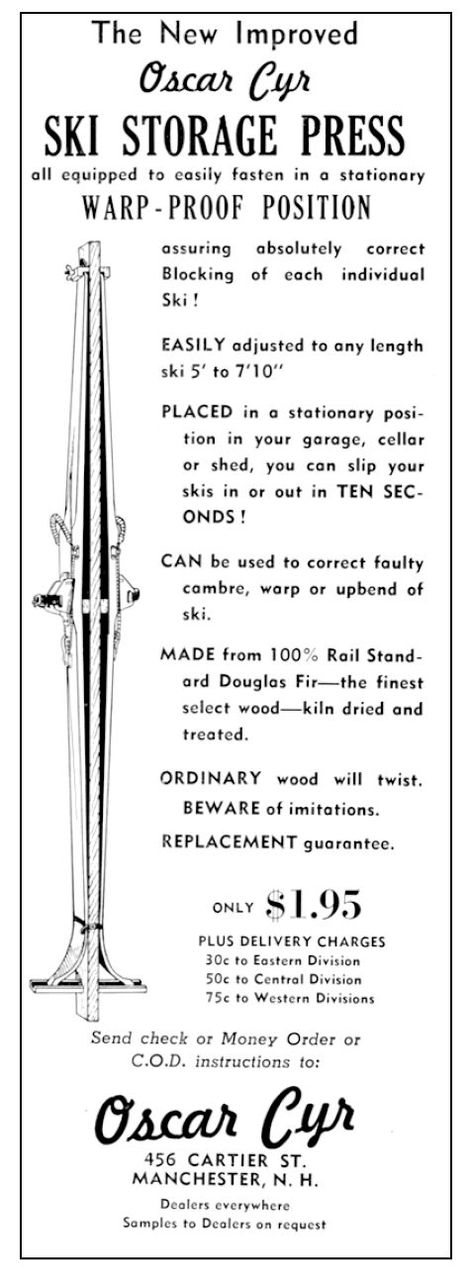
When wooden skis warped and the camber went out of them over a summer, a press like Oscar Cyr’s that kept tails together and tips apart was a necessity. A blocking system at mid-ski prevented the loss of camber. As the advertisement implies, there were a number of such presses on the market.